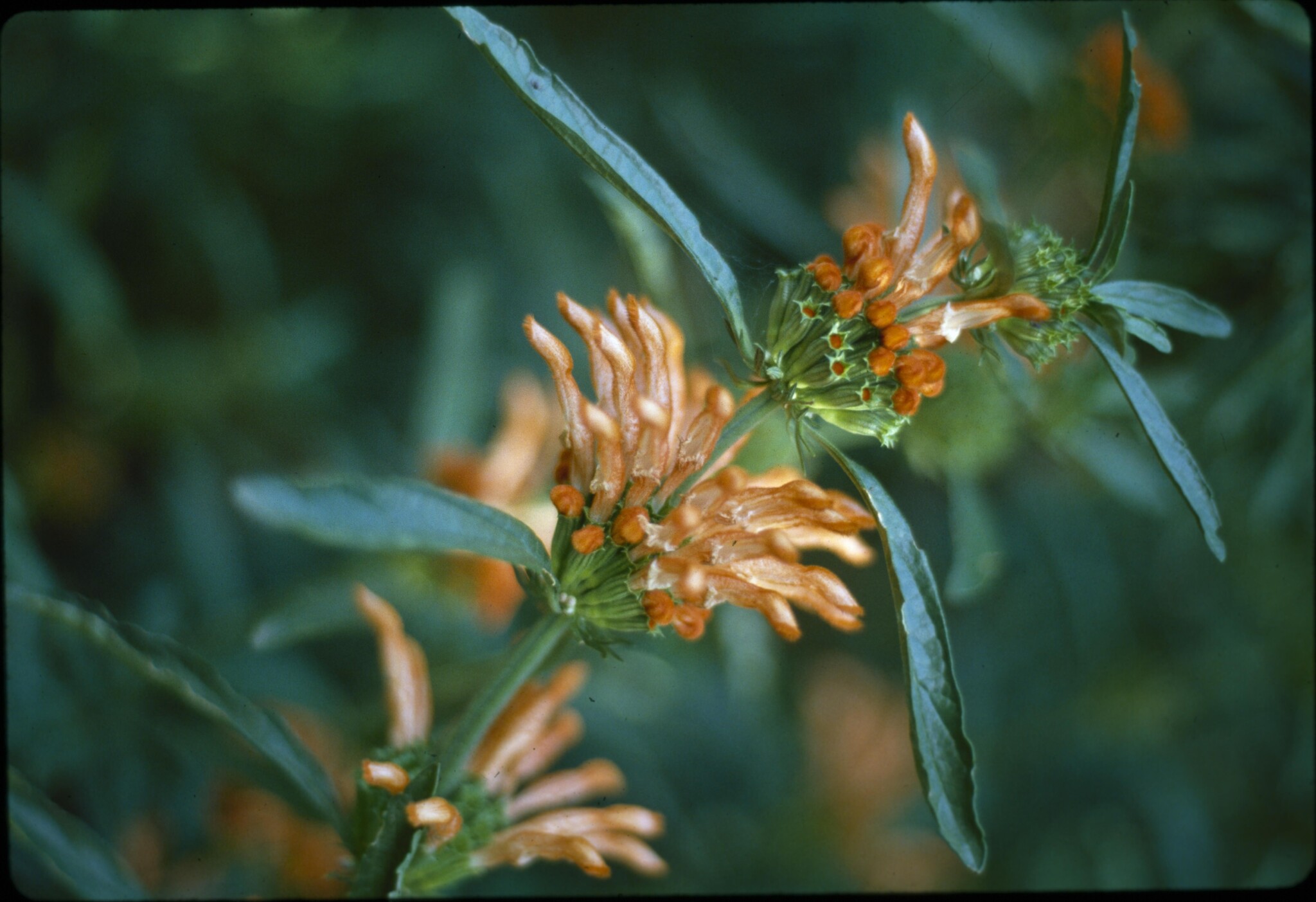
Greek leon — lion, otis — ear, referring to the hairy, ear-like upper corolla lip.
Aromatic annual or perennial herbs, subshrubs or shrubs. Leaves opposite, simple, toothed, ovate to lanceolate. Flower clusters of well-spaced axillary whorls. Flowers with calyx tubular, 10-veined and with 8-10 long-pointed teeth. Corolla tube 2-lipped, the upper lip much longer than the lower one. Stamens 4, the lower pair shorter than the upper pair
Grown in the border for the upright habit and rusty orange clusters of flowers.
Seed or softwood cuttings.
Some species have edible flowers; an infusion has been used to remove lice. L. leonurus has medicinal properties.
Upper lip of corolla much longer than lower lip; flowers generally rusty orange.
About 15 species, mostly from tropical and southern Africa.
Source: (2002). Lavandula. In: . Horticultural Flora of South-eastern Australia. Volume 4. Flowering plants. Dicotyledons. Part 3. The identification of garden and cultivated plants. University of New South Wales Press.
